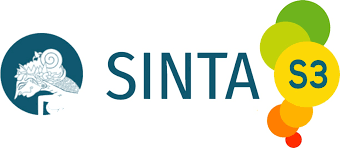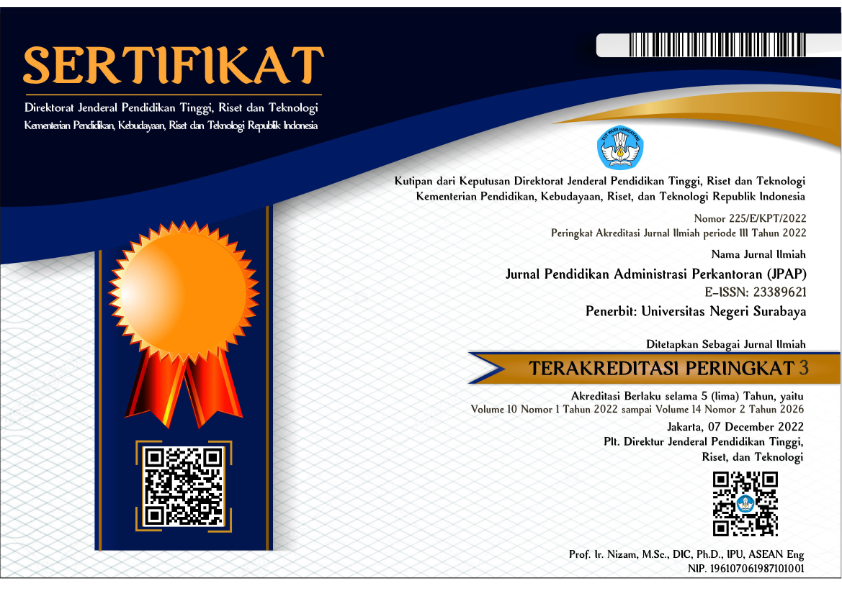The Influence of Discipline, Independence, and Peers on Learning Outcomes SMK PGRI 2 Taman Pemalang: Learning Motivation as Mediator
DOI:
https://doi.org/10.26740/jpap.v13n2.p552-570Abstract
Phenomenon/Issue: This study explores the effectiveness of discipline, independence, and peers in optimizing learning outcomes, especially in the basic subject of the skills program on digital-based document material.
Purpose: This study aims to analyze the effect of learning discipline, learning independence, and peers on learning outcomes, learning motivation as a mediating variable in class X students of SMK PGRI 2 Taman Pemalang.
Novelty: This study uniquely incorporates learning motivation as a mediator within the framework of discipline, independence, and peers on learning outcomes and offers new insights for education and future research.
Research Methods: Data were collected from 141 students of class X majoring in office management and business services at SMK PGRI 2 Taman Pemalang through questionnaires, learning outcomes tests using Structural Equation Modeling (SEM) to examine the relationship between discipline, independence, and peer to learning outcomes through learning motivation.
Results: The results showed that learning discipline, learning independence, and peer influence had a positive and significant effect directly on learning outcomes. In addition, these three factors also have a positive and significant effect on learning motivation. Learning motivation acts as a mediator that strengthens the relationship between learning discipline, learning independence, and peer influence on learning outcomes.
Research Contributions: This research deepens the theoretical understanding of learning discipline, learning independence and peer influence in educational contexts and provides a practical framework for motivation-focused learning strategies to improve student learning outcomes. The findings can guide policymakers and educators in designing learning processes that meet students' academic and motivational needs
 Abstract views: 58
,
Abstract views: 58
, PDF Downloads: 51
PDF Downloads: 51









